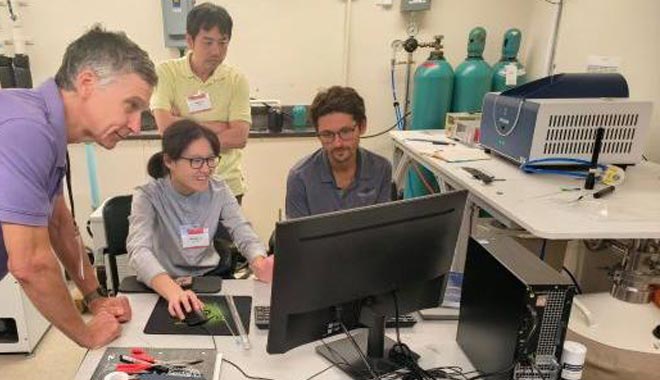Choosing the right EPR spectrometer in 2025 means more than just comparing specs. With expanding applications in chemistry, materials science, spintronics, and biophysics, labs need to consider long-term usability, performance, upgrade flexibility, and technical support. Whether you're replacing an aging setup or equipping a new facility, this guide walks through key decision points based on real-world needs and lab feedback.
1. Define Your Research and Teaching Priorities
Start with the core question: What will you actually use the EPR system for?
- Routine CW EPR for free radicals and transition metals?
- Advanced pulse EPR for spin coherence, relaxation, or DEER?
- Do undergraduate teaching labs require safe and intuitive operation?
If your lab focuses on education or simpler paramagnetic analysis, a benchtop EPR spectrometer may be sufficient and cost-effective. For groups targeting pulse techniques, variable temperature EPR or time-domain studies, a full console system with pulse modules is essential.
CIQTEK offers both compact EPR spectrometers for academic labs and research-grade advanced EPR solutions ready for pulse and cryogenic experiments, with modular options that support future expansion.
2. Match Technical Specs with Your Use Cases
Before investing, dig into performance indicators that align with your experiments.
- CW Sensitivity: Look for high signal-to-noise ratio and digital field stability to ensure reproducibility in long scans.
- Pulse Capabilities: Evaluate whether you’ll need phase-coherent pulse programming, arbitrary waveform generation, or echo detection.
- VT Control: Labs operating below 77 K require seamless switching between nitrogen and helium, with minimal manual tuning.
- Frequency Band: X-band EPR is the standard, but applications in low- or high-frequency may call for dual-band flexibility.
Real feedback from CIQTEK EPR users in Europe, the U.S., China, Japan, etc, shows that digital upgrades to control modules and built-in VT systems have cut down tuning time and improved overall workflow stability—especially in multi-user environments.
3. Consider Footprint, Infrastructure, and Software Usability
A common limitation in university and shared labs is space. A benchtop EPR can fit into small teaching or departmental rooms with limited cooling and power supply. These systems are also easier to relocate or share.
In contrast, full-size EPR spectrometers need dedicated space, often including external chillers or helium recovery if used at low temperature. But they offer broader accessory compatibility, like resonators, cryostats, and future pulse upgrades.
Also, test the software: modern EPR software should support automated tuning, graphical pulse design, and batch data export. CIQTEK’s unified control interface allows both beginners and advanced users to run experiments efficiently, reducing training time for new researchers.
4. Think Long-Term: Service, Upgrade Paths, and Support
Installation is only the beginning. A reliable support model ensures you can maximize performance in the long run.
- Does the vendor offer remote diagnostics?
- Are software and firmware updates included?
- Is there local service coverage or a regional demo lab?
CIQTEK works with local partners and academic labs across Europe and North America. Several customers highlight the responsiveness of their engineering team and the clarity of their training materials. The company also provides EPR modernization and upgrade services, helping labs upgrade legacy magnets with new digital control, VT integration, and pulse options without a full system replacement.
5. Learn from Real-World Examples
A materials research group in Asia was able to transform their 20-year-old EPR system into a modern pulse-capable instrument by upgrading with the CIQTEK EPR modernization package. This allowed them to keep using their existing magnet while gaining modern features like programmable pulse sequences and variable temperature control.
Meanwhile, a university in France deployed a CIQTEK benchtop EPR spectrometer for undergraduate education. Faculty reported that the system’s small size, easy calibration, and built-in safety controls made it ideal for hands-on teaching in chemical physics courses.
These examples show how flexible options, from compact teaching units to full lab retrofits, can match different research and budget needs.

6. Use This Checklist Before Buying
- Before making a final decision, go through this checklist:
- What are your core experimental needs, CW, pulse, VT, or all?
- Do you need benchtop flexibility or full-featured performance?
- How much space and power is available in your lab?
- Is the software easy enough for students or first-time users?
- Are upgrade paths available for future Pulse or VT modules?
- Can you request a demo, on-site or remote, with sample testing?
- What’s the total cost of ownership over 5–10 years, including service?
CIQTEK: A Flexible Choice for Modern Labs
Whether you're setting up a teaching lab, replacing an aging system, or expanding into pulse EPR research, CIQTEK EPR solutions are designed to grow with your lab. Compact systems offer excellent entry points for education, while console platforms provide advanced research functionality and seamless integration with variable temperature and pulse upgrades. With real-world modernization services and local support options, CIQTEK enables labs to move forward with confidence, without overcommitting budget or lab space.
Learn more about CIQTEK EPR products and modernization services at www.ciqtekglobal.com
